#barcelona pavilion
Photo

Gian Lorenzo Bernini, mattress for Sleeping Hermaphroditus (155 BC), 1620
VS
Ludwig Mies Van Der Rohe, Barcelona Daybed, Knoll, 1930
#Gian Lorenzo Bernini#sculpture#mattress#Hermaphroditus#galleria borghese#musée du louvre#paris#france#marble#barocco#baroque#ludwig mies van der rohe#barcelona#daybed#knoll#design#modernism#modernist#modern design#barcelona pavilion
156 notes
·
View notes
Photo

Electric Utilities Pavilion at the 1929 Barcelona International Exhibition by Mies van der Rohe
#1920s#exhibition pavilion#modernism#modernist#architecture#spain#architektur#barcelona#mies van der rohe
256 notes
·
View notes
Text



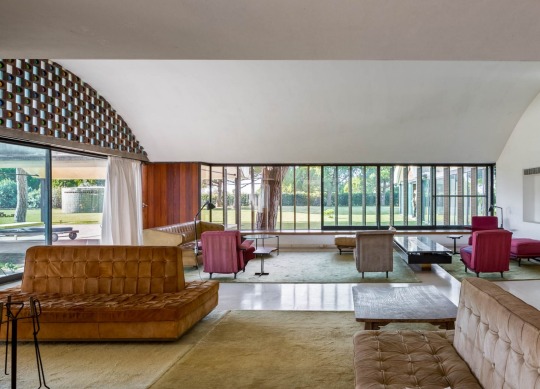

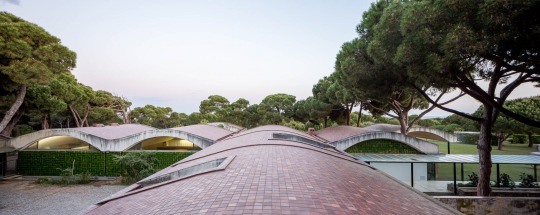
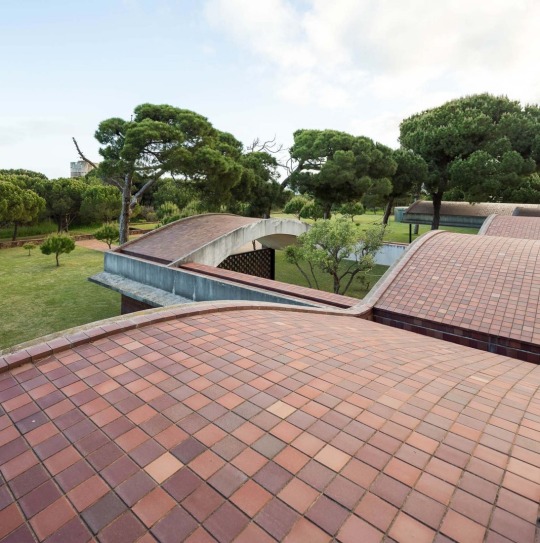


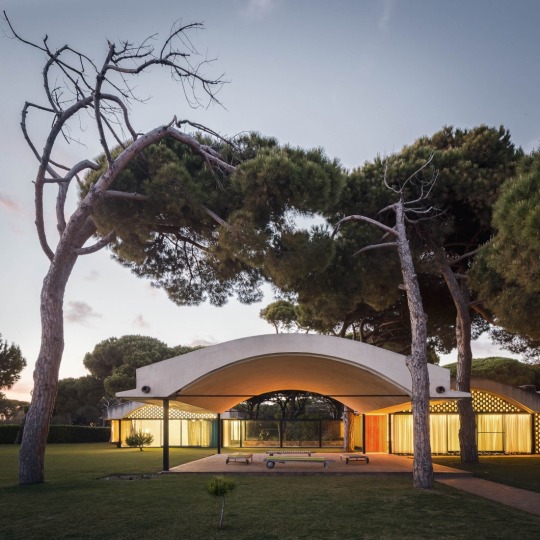
La Ricarda | Antonio Bonet
Barcelona | Spain | 1962
After his studies in Barcelona, Antonio Bonet joined forces with Josep Lluis Sert, wo worked on the Spanish Republican Pavilion at the 1937 Paris International Exhibition. After a period of working in Le Corbusier’s atelier, Bonet moved to Argentina for a number of years. La Ricarda, Bonet’s most famous house, was designed and built in a transitional period during which the architect relocated back to Spain and the city of his birth. La Ricarda is a large family home set within spacious grounds not far from Barcelona; the small airfield nearby has since grown into an international airport. The residence was commissioned by the Gomis family, who were great supporters of the arts - including architecture and music. Bonet created a series of single-storey pavilions with vaulted roofs, interspersed with terraces and outdoor rooms. There was a pavilion devoted to the master suite, another for the children and a larger structure dedicated to the principal living spaces, which were both fluid and spacious enough to accomodate social gatherings and concerts. The vaulted roofs add a sculptural dimension, while the extensive use of lattice windows with ceramic, glass and stained-glass blocks add colour and texture throughout as well as filtering the summer sunshine.
Images: © Símon García
Words: © thegreatdaydreamer
#architecture#modern architecture#modern home#luxury houses#luxuryhomes#pavilion#bungalow#la ricarda#antonio bonet#barcelona#urban landscape#garden#interior#interior design#house design#design
12 notes
·
View notes
Text
BCN Gaudí Mies Coderch Meier



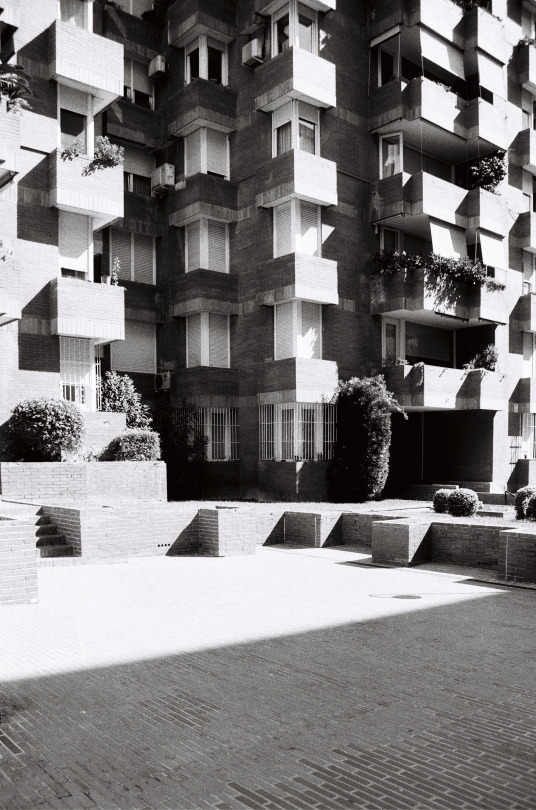


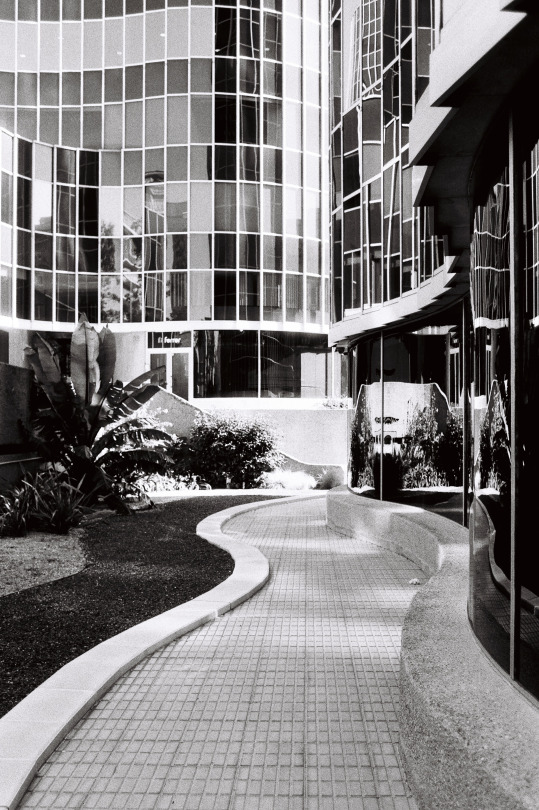
#Barcelona#Architecture#arquitectura#coderch#antoni gaudí#Mies van der Rohe#richard meier#black and white#architecture photography#analogue photography#macba#park guell#expo pavilion
4 notes
·
View notes
Text

MIES VAN DER ROHE - Barcelona Chair
One of my interior design courses required me to make an analysis of a piece of furniture. Since my entire assignment is based on the early design principles of Bauhaus, I chose one of the most famous chair designs of their third and last director: Ludwig Mies van der Rohe.
The Barcelona Chair was designed for his Barcelona pavilion and unlike other pavilions at the exposition, Mies understood his design simply as a building and nothing more, it would not house art or sculpture rather the pavilion would be a place of tranquility and escape from the exposition, in effect transforming the pavilion into an inhabitable sculpture.
The form of the chair is thought to be extrapolated from Roman folding chairs known as the curule chair - upholstered stools used by Roman aristocracy. It has beautiful formal balance, clarity and simplicity. He was always concerned with expressing the spirit of the modern era.
#barcelona chair#pavilion#miesvanderrohe#mies van der rohe#architecture#modern architecture#chair design#famous architects
1 note
·
View note
Text
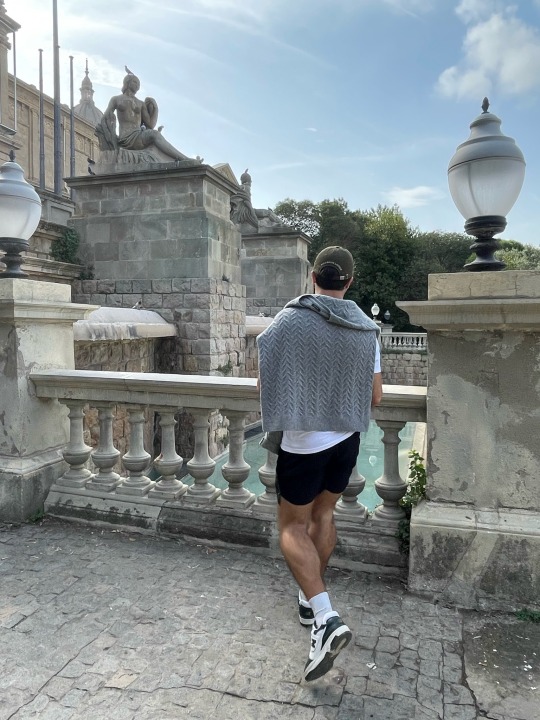

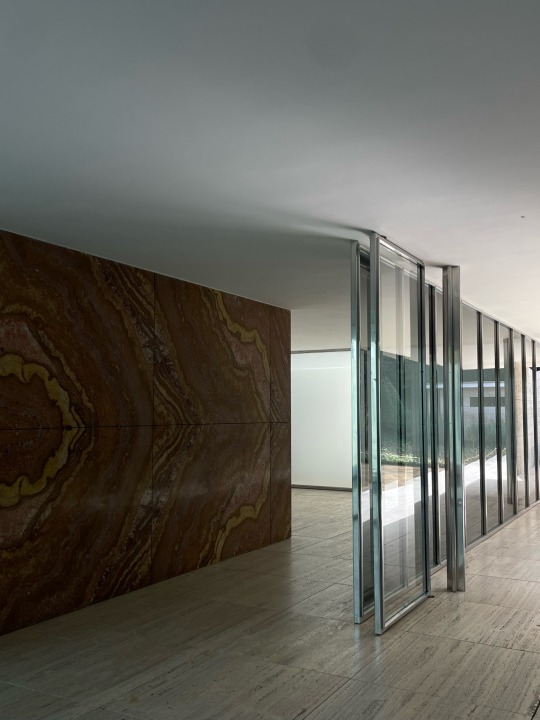
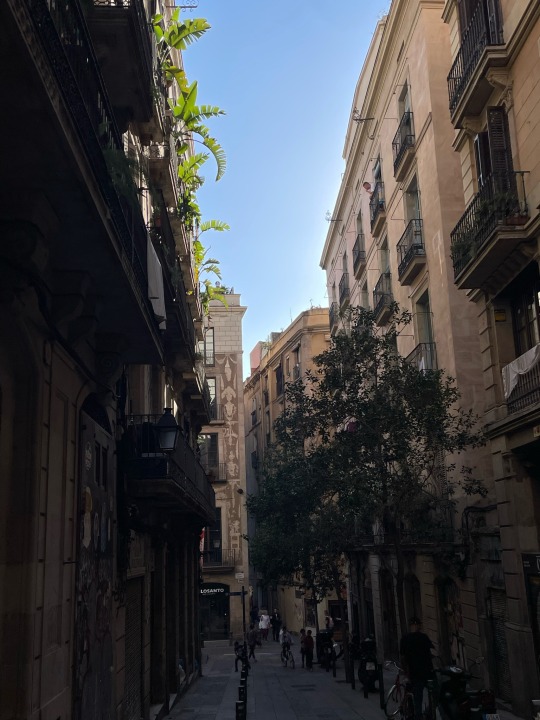
Barcelona, Barcelona, why were you soo good to me, it hurts?
#barcelona#europe#architecture#travel#travelling#spain#sagrada familia#gaudi#mies van der rohe#german pavilion#catalunya#man
0 notes
Text

1 note
·
View note
Video
youtube
THE BARCELONA PAVILION John Peel 18th August 2003
0 notes
Note
could you please tel us about some chairs with names
hi i'm sorry for not seeing this earlier! i mostly use tumblr on mobile and it hides the inbox from me.
so, most chairs have names! usually given to them by their designer or manufacturer, but for much older pieces it could be what they've become known as by historians. here are some of my faves:
the womb chair

of course. the womb chair was designed by eero saarinen and manufactured by knoll (now by design within reach) and it is my very favourite chair in the whole world. incredibly comfortable and certifiably iconic (it was the first molded fiberglass chair), it was called the womb chair after Florence Knoll requested a chair she could "curl up" in. It's been enablng laziness since 1948.

the barcelona chair
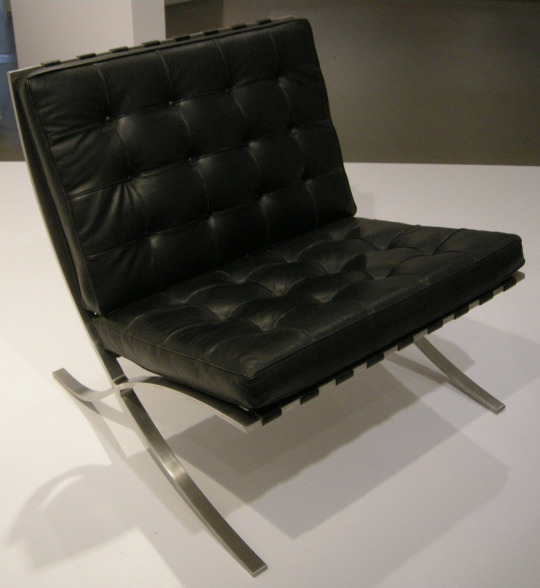
here's a name that is directly tied to the chair's origin: the barcelona chair was designed by ludwig mies van der rohe for the king and queen of spain to use within the german pavilion which mies designed for the 1929 World's Fair in Barcelona.
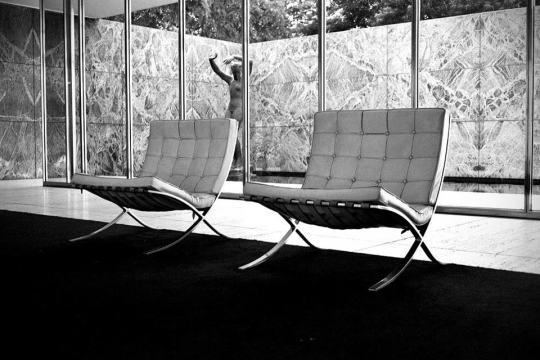

it was a hit, and the rest is history! the barcelona chair has been in almost constant production (also by knoll and then design within reach) ever since.
the sgabello

here's one where the name is a type of chair--the sgabello (this one is half of a pair in the national gallery of art, washington dc collection) was big in renaissance europe. designed to line hallways and be sat in for short periods of time (a comfortable seat this was not), sgabelli were usually constructed of walnut and elaborately carved. any chair of this form would be considered a sgabello--here's an earlier one with very different aesthetics in the collection of the met.

the butaque chair

finally, a chair which combines type and proper noun names. the butaque is a chair which came into use in colonial-era latin america, a hybrid of the spanish x-frame chair and pre-columbian duho. this specific butaque, which has come to be known as a proper-noun Butaque Chair, was designed by Cuban-born Clara Porset, who lived and worked in Mexico from 1935 on. She set out to learn more about the vernacular furniture in her adopted home, and came across the butaque. Her version emphasized ergonomics and local materials--the original (c. 1950) porset butaques are covered in wicker, leather, or locally woven fabrics.
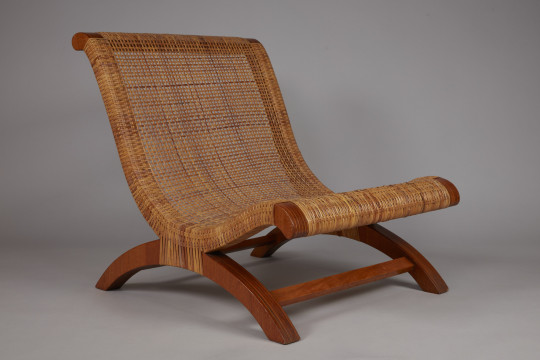
here's the one the moma has, which is covered in wicker.

and here's a photograph of porset's home.
i hope you enjoyed this taste of chairs with names! i encourage you to look up the furniture/decorative objects you love the most--they probably have names, too :)
1K notes
·
View notes
Text
🎂🌟 Today we celebrate the birthday of Ludwig Mies van der Rohe, one of the greatest architects of all time! His groundbreaking minimalist designs and his famous motto "Less is more" have left a lasting impact on modern architecture. Let's remember his impressive masterpieces like the Barcelona Pavilion, Farnsworth House, and the Seagram Building, and continue to be inspired by his vision. Happy birthday, Mies van der Rohe!
132 notes
·
View notes
Text
The Habit He Can’t Break, 1/4
IQ 123 | Gordon Masson | 9.11.2023
Usually, when an act completes a world tour, they come off the road for an extended period to rest, record new material, and then typically two or three years later, the wheels are set in motion for an album, released, promo, and tour dates.
Louis Tomlinson did not get that memo.
His first solo tour ran late due to the pandemic restrictions, meaning that by the time it concluded in September 2022, his second album, Faith in the Future, was scheduled to drop and tickets for the associated tour were ready to go on sale.
“This tour went on sale late October or November - basically a year in advance,” explains agent, Holly Rowland, who represents Tomlinson alongside Alex Hardee, internationally, while Wasserman Music colleagues, Marty Diamond and Ash Mowry-Lewis do likewise for North America. 
Despite that quick turnaround between tours, Rowland reports that ticket sales for the current tour are going very well indeed. “The first leg went through Scandinavia before doing the Baltics and Eastern Europe – Romania, Bulgaria, and Greece – places that most people, especially arena-level acts, don’t really go. And the second leg, which is more mainland Europe, started 2 October.”
The tour is big. Very big for just a second outing in his own name. 
Between May and July this year, Tomlinson played 39 dates in the US and Canada across a mix of amphitheaters, arenas, pavilions, and stadiums. In August, he returned to Europe, where he currently is in the midst of another 39 dates in arenas across the continent and the UK, which will take him to 18 November. Then, in early 2024, the Faith in the Future tour goes to Australia for two outdoor dates in Melbourne and Brisbane, before he takes the show to the country’s biggest indoor venue, the Qudos Bank Arena in Sydney.
And, as IQ went to press, Louis Tomlinson released dates for a return to Latin America in May 2024 for a mix of indoor and outdoor shows, including stadia, across Mexico, Argentina, Brazil, Chile, Colombia, Costa Rica, Panama, Paraguay, Puerto Rico, and Uruguay.
“We’re going to Australia and part of Asia early next year,” states artist manager Matt Vines of London-based Seven 7 Management. We then go into Latin America in May and June. And then we’ll handpick a selection of festivals next summer, before we draw the line on the campaign at the end of the summer.”
Rowland comments, “The tour before obviously was a Covid tour where the dates had to be chopped and changed. The positive aspect of that was that we were able to upgrade venues where that made sense. But it was really nice to start from scratch on this tour to make sure the routing was all going in the right direction.”
Back to You
Playing a major role in shifting that ticketing inventory is a network of promoters also enjoying Tomlinsons rising star.
“On this tour, it’s mainly Live Nation – we use a lot of the One Direction promoter,” explains Rowland. “But for Greece, we used Honeycomb Live, Charmenko did Romania, 8 Days A Week promoted the three shows in the Baltics, All Things Live did Finland, Fource are doing Orague, it’s Gadget in Switzerland, Atelier in Luxembourg, and when we get to the UK, it’s SJM, and MCD in Ireland.”
With a total of 39 European dates, Rowland split the outing into separate legs, scheduling a break after Scandinavia, the Balkans, Baltics, and Athens, Greece, and another after mainland Europe, ending in Zürich, Switzerland. 
“It’s a perfect ratio, if I do say so myself,” she laughs. “It was right to split it up – 39 dates is a long, long tour, especially with the American tour throughout the summer being 11 weeks! We made sure to schedule days off, for everyone to recharge their batteries.”
In Spain, Nacho Córdoba at Live Nation promoted Tomlinson’s shows in Bilbao, Madrid, and Barcelona, and reports sell-outs at each of the arenas involved. 
“When Louis was last here, it was three days before the pandemic shut everything down in Spain. In fact, I think he played the final show before the market closed because of Covid.,” says Córdoba.
“Last year, Louis organized his Away From Home Festival in Fuengirola, and that also sold out, so we know he has a big following in Spain, and we also know that Spanish fans are super loyal. So, on this tour we sold out 7,000 tickets at Bilbao Arena Miribilla, 13,600 tickets at Wizink in Madrid, and 11,200 at Palau St Jordi in Barcelona.”
Already looking forward to Tomlinson “and his fantastic team” returning on the next tour, Córdoba believes it will be important to see what happens with the next album – and Tomlinson’s expectations – before making any plans. 
“The most important thing is to keep the fans happy and keep the momentum building with Louis,” he states. “I am a big fan of the arenas, because the atmosphere at his shows was incredible. So, rather than look at going bigger, it might be a case of looking at other arenas in other markets. Whatever he does, we cannot wait to have Louis back in Spain.”
Stefan Wyss at Gadget abc Entertainment in Switzerland promoted Tomlinson when he visited Zurich’s Hallenstadion on 23 October and explains that he previously played the city’s Halle 622 venue on the first tour.
Recalling the debut solo outing, Wyss tells IQ, “At first, we announced a mid-size theatre club show, 1,800-capacity, but it sold out instantly. Then we moved it to Halle 62, which is 3-500-cap and that also sold out immediately, so it was a really big success. 
“They’ve invested a lot in the production of this current tour, and it’s doing really strong numbers, so that’s why we decided to go to the arena this time around, where we set a mid-size capacity of 7,000, which is good for a small market like Switzerland, especially because he’s coming back just one year later and playing a much bigger show.”
Wyss adds, “He’s kept the ticket prices reasonable – and he never wants to do any gold circle or VIP tickets. I think that’s why he’s so close to his fans, because it’s not about maximising profits. Another reason for his success is that in addition to attracting a mainstream audience, he’s also getting the music lovers because he’s just a very good songwriter and has brilliant songs.”
Wyss also notes that with many young fans typically arriving the day before the concert, the responsibility to look after them is extended. “We set up toilets, we have security overnight, we give water away. It’s part of the organization that we will take care of the fans.”
Fresh from announcing 12 dates across Argentina, Brazil, Chile, Colombia, Costa Rica, Peru, Paraguay, Panama, Puerto Rico, and Uruguay, promoter Fabiano Lima De Queiroz at Move Concerts reports that Tomlinson will visit a mix of arenas, as well as stadiums in Santiago, São Paulo, and Buenos Aires, during his May tour.
“Our first tour with Louis was supposed to be in 2020 and we’d booked half arenas everywhere – 5,000–6,000 capacities,” he informs IQ. “Louis was one of those acts who connected very well with the fans during the pandemic, so when we shifted the dates, first to 2021, and then to 2022, we ended up selling out and having to upgrade in certain metropolitan markets.”
2/4, 3/4, 4/4
86 notes
·
View notes
Text
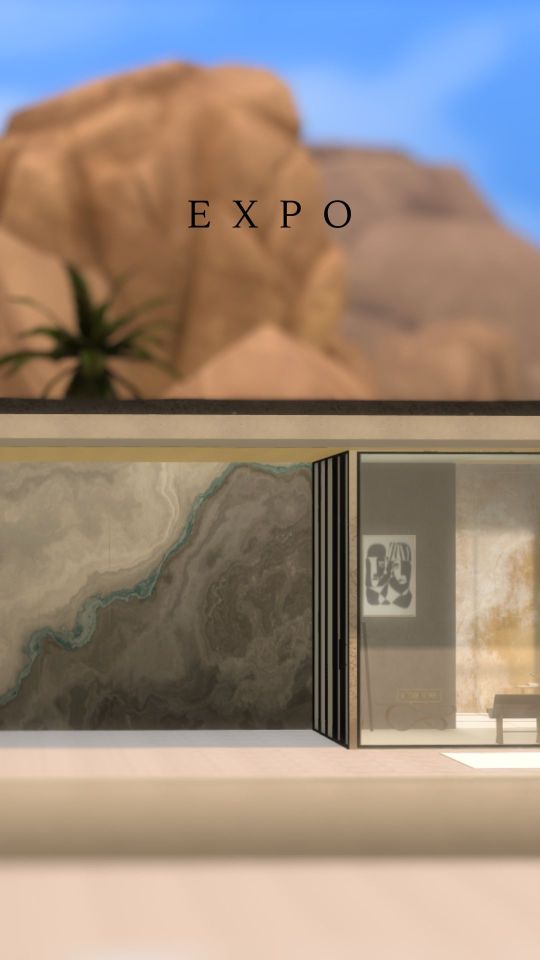







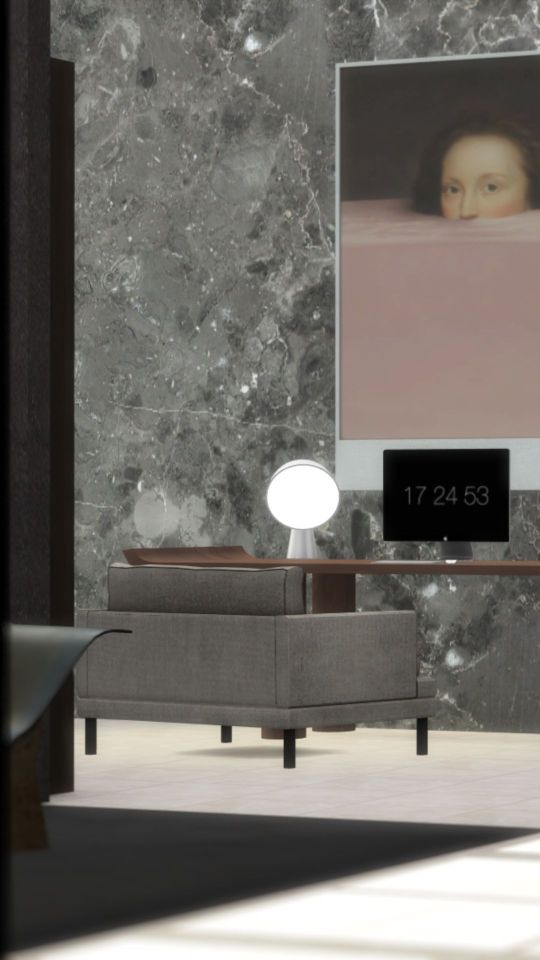




E X P O
September reward
Okay, so when I was in Barcelona a month ago I got the honor of visiting the Mies van der Rohe Pavilion. While there I thought a lot of what would happen if you reimagined the pavilion as a residence, and sort of came up with this. This is a completely different structure and layout, but it is loosely based on the German expo building. It is also very inpired by Hel-studio, Ledger and Eniosta.
You can download the build here X (public in three weeks, as always).
Please keep in mind that the build is not functional.
Don't forget to download all of the amazing CC to make the build look like in the pics:
Ledger: X X X X X X X X
Sundays/HEL: X X
Novvvas: X
Sanoy: X
MDM: X X
Aggressive Kitty: X X
Anye: X X X X X X X X X
SYB: X
Ddaeng: X
Happy simming!
55 notes
·
View notes
Text
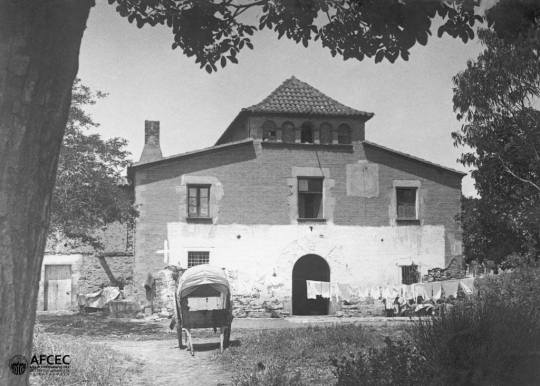

Barça fans, do you recognise this place?
This is a photo of what la Masia (Barça's youth academy) looked like in 1925. (Photo colorized by Catalunya Color).
Back then, it was literally just a masia. "La masia" simply means "the farmhouse" in Catalan. This particular masia is called Masia de Can Planes. It dates back to, at least, the year 1515, where a written document talks about the farm and its surrounding fields belonging to a man called Jaume Planes. It was owned by his descendants, who rebuilt and adapted parts of the building in different time periods, until the year 1950.
In 1950, Barça bought it from the last heir, Francesc Planes i Buera. They built Camp Nou (Barça's stadium) in the fields owned by this farm.
When Camp Nou was being built, the farmhouse was used as the meeting place for architects and where they made and kept the stadium's plans and models. After the stadium was inaugurated, the farmhouse became Barça's office building.


La Masia de Can Planes nowadays, with Camp Nou stadium behind it.
In 1978, the club decided to turn the farmhouse into the residence for Barça's youth academy, which became one of the most successful football youth academies in the world. It's renowned for its respect for students and their academic focus as well as the sports side of it. That's when Barça's youth academy became known as La Masia.
Many of La Masia's students have gone on to brilliant football careers, including Pep Guardiola, Leo Messi, Xavi Hernández, Andrés Iniesta, Carles Puyol, Carles Busquets, Cesc Fàbregas, and Gerard Piqué, among others.
In 2011, Barça decided to upgrade their youth academy to be able to have more students. They built a new building as their residence in Sant Joan Despí (a city right next to Barcelona), in the Ciutat Esportiva Joan Gamper (Joan Gamper sports complex). This new building has the capacity to be home for 85 sportspeople, compared to the 60 that could be housed before (12 in the farmhouse and 48 in the equipped spaces in the North Goal of the Camp Nou).
It's next to the rest of sports facilities in the Joan Gamper sports complex, which includes 5 natural grass football pitches; 4 fieldturf pitches; 3 sports pavilions for basketball, handball and futsal, training areas for goalkeepers and specific techniques, gymnasiums, first aid areas, press conference rooms, service buildings, a pool, and saunas used for recuperating from injuries.
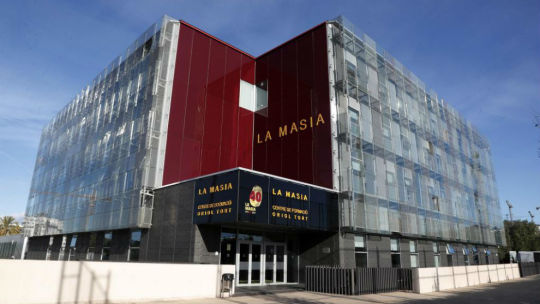
The modern "La Masia" building in Sant Joan Despí.
Even though they moved to a new building that isn't a masia (farmhouse) anymore, everyone has always called Barça's youth academy "La Masia", so they still call it that.
#barça#futbol#esports#barcelona#sant joan despí#catalunya#football#soccer#fc barcelona#la masia#xavi hernandez#leo messi#pep guardiola#sports#fc barca#barca#la liga#training
37 notes
·
View notes
Text
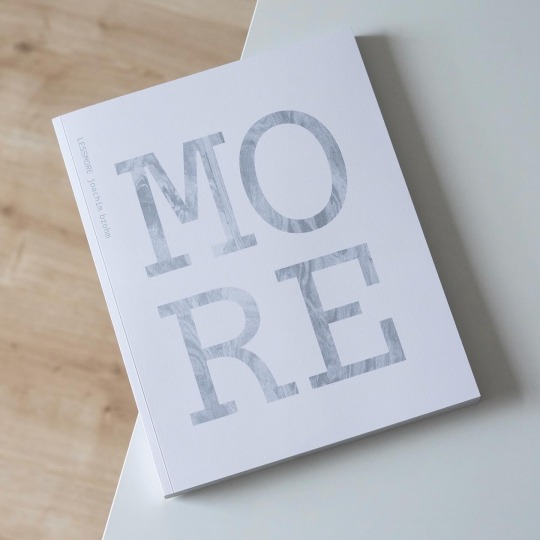

The austere beauty and precision of Mies van der Rohe’s has literally been captured by thousands of photographers, be it amateurs or Hedrich-Blessing, Hiroshi Sugimoto, Michael Wesely and even Julius Shulman. What all of them have in common is the focus on the auratic appeal of Mies’s buildings, a quality that admittedly is hard to ignore. The German photographer Joachim Brohm approaches Mies’ architecture differently: between 2013 and 2023 he visited sites buildings of Mies van der Rohe but refrained from the usual, wide-angled architectural photography that dominates the perception of his architecture. Instead, Brohm focused on the materiality, the many transformational interventions and the reconstruction as well as interpretation of Mies van der Rohe’s architecture.
A selection of photographs from this long-term project Brohm published last year in the book „LESSMORE - Buildings, sites and scenes in reference to Ludwig Mies van der Rohe“ via his self-publishing house BR-ED: on 300 pages the book shows less of the buildings as an iconic whole and more of their checkered history, their transitory state. This approach has become a hallmark of Brohm’s more recent work, e.g. in his „Areal“ series, and offers the spectator a novel perspective on an architecture seemingly well-known. Photographs of the Neue Nationalgalerie during restoration, the rebuilt Barcelona Pavilion or the temporary resurrection of the never built Golf Club in Krefeld trigger a reflective process about the historicity and museumization of Mies’s buildings. In this context Wolfgang Ullrich brought up Roger Buergel’s leitmotif of documenta 12 in 2007: „Is Modernity our Antiquity?“, a fitting question in view of the fact that Mies’ heroic projects are roughly a hundred years old and the context in which they were conceived become ever more foreign to today’s spectators. Brohm’s photographs show these buildings as modern antiques in which different layers of time have inscribed themselves and deconstruct the perfect image we have of them. But embedded in this challenge is the opportunity to gain new insights into the meaning of modernity as well as its contemporary condition. A brilliant book!
#joachim brohm#photography book#mies van der rohe#architectural photography#documentary photography#book
15 notes
·
View notes
Note
What’s your beef with Frank Gehry?
It's not so much my beef with him as it is my beef with what he represents: modernist/contemporary architecture.
So Gehry's most known works include things like the Lou Ruvo Center, the Disney Concert Hall, or the Biomuseo in Panama (which I have been to!). These buildings are all pretty wacky, using flat sheets of metal that curve in unusual ways or inward facing angles. And while I think it's interesting to be able to physically build something like that, all of the credit has to go to the engineers because as someone who studied architecture in college, I can promise you that no architect goes into a design actually thinking about how it'll physically be made.
But here's the thing: anyone can design a statement building. I can and have designed statement buildings. It's easy to think "what's the most wild thing I can do" and then throw uncommon angles and sheer faces at something until you have a building that twists and turns and becomes a spectacle. And sometimes it's cool. The Biomuseo is a flash of color that feels very almost bowling alley carpet with its accordion folds. I love the MoPOP's statement wall with that bright purple that catches the sun. But ANYONE can do this. It's not a challenge to design an eyesore like the Marqués de Riscal hotel. I could crumple a piece of paper into a ball and bam, there's my building design.
But you know what IS a challenge? Designing a building that blends in with the landscape. A building that isn't meant to stick out but is seamless and intentional. Buildings that use the color palettes of their surroundings, like Lake|Flato's Horizon House or Marmol Radziner's Scottsdale home. Incorporating native flora and materials and climate and setting into the actual design. Having the house face east so that it can temperature regulate more naturally or keeping everything single-story so it doesn't disrupt the horizon. It's taking inspiration from historical pueblo-style homes instead of doing more and more glass and metal which gets hot as hell in the direct sun.

I'm very much a Mies van der Rohe fan, I think the Farnsworth House and the Barcelona Pavilion are some of the sickest buildings ever made because there's something more impressive about doing more with less. FH and BP are both white boxes. They have flat roofs and open floorplans and all right angles, but there's something so much more impressive about doing something iconic within those limitations than there is doing whatever the hell Gehry and his contemporaries like Libeskind are doing. The ROM looks like what happened in S3 of Fringe when the building from the other side collided with its opposite on this side. It feels like it's trying to be edgy (literally) and different for the sake of being edgy and different. Which is fine, but it's not that impressive to me.
But it's so much more impressive when you don't just plonk some big crazy metal and glass building down in the middle of a city or when you're trying to design something specifically to one-up your other architect buddies. When you have to make something feel intentional from start to finish, that's so much more interesting. When you have limitations from the beginning like materials and weather and the sun, that's where only a real expert can design something that really shines.
#questionbell#feline--floozy#there is one particular house i was obsessed with but i cannot for the life of me remember who designed it
18 notes
·
View notes
